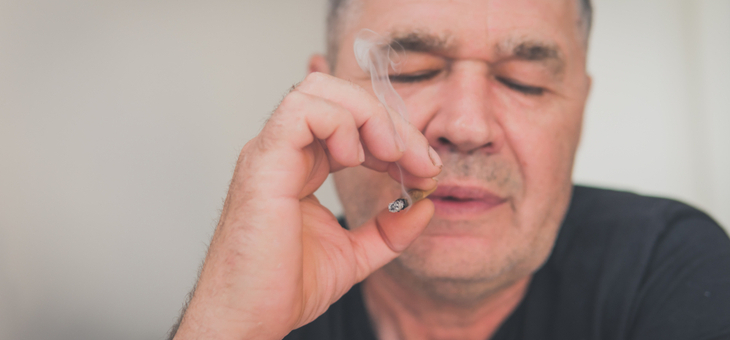Older Australians are smoking more and using illicit drugs more frequently, according to new research from the Australian Institute of Health and Welfare (AIHW).
Illicit drug use among people aged 50-plus has doubled – from 11 per cent in 2001 to 22 per cent in 2016 – and the percentage of people aged 40 and over who smoke has jumped from 44 to 57 per cent.
The report, Alcohol, tobacco and other drugs in Australia, presented some sobering findings on the trending habits of older people:
- Tobacco is the leading risk factor for the burden of disease among people aged 65–84, and the leading cause of cancer (22 per cent).
- Females in their 50s (13 per cent) and males aged 55–64 (28.8 per cent) were most likely to exceed lifetime risk guidelines by consuming, on average, more than two standard drinks per day.
- People in their 60s were most likely to exceed the single-occasion risky drinking guidelines on at least five days per week (seven per cent in 2016, up from 5.7 per cent in 2013).
- Illicit drug use among people aged 50 and over appears to be more prominent in 2016 (22 per cent) than in 2001 (11 per cent).
- Recent use of any illicit drug has nearly doubled among males in their 50s (from 8.1 per cent in 2001 to 15 per cent in 2016) and in males aged 60 and over (from four per cent to 7.9 per cent).
- Drug-induced deaths among older people have increased since 1999.
Information collected by the AIHW indicates that some of these trends are unlikely to be reversed soon. The main reason older smokers gave for not wanting to quit was because they enjoyed it and almost half of daily and occasional smokers aged 70 and over were not planning to quit.
Alcohol and Drug Foundation spokeswoman Melinda Lucas told The Age and The Sydney Morning Herald that the figures reflected an “ageing cohort” of drug users who had not given up substances in the same numbers as the generations that preceded and followed them.
“Also, as we start to see a lot more interest in people using cannabis for medical purposes, a lot of people report using cannabis medically but unprescribed,” she said. “Society has changed in how we view cannabis; support for legalisation has significantly increased and there is less stigma.”
She said that Australian Bureau of Statistics (ABS) cause-of-death data showed the rate of drug-related deaths among younger people had dropped since 1999, but had increased among those aged 45 to 64.
“Most overdose deaths are from prescription opioids and benzodiazepines, which far outweigh the number of [illicit] drug overdoses,” she said, adding that the risks increased exponentially when substances such as valium were used with alcohol.
She said the problem was one for the entire community, although doctors were perfectly placed – and had a responsibility and an opportunity – to spot problems and offer assistance.
But the big picture, she said, was the need for a “nationally consistent”, real-time prescription monitoring system to help identify patients with addictions.
Federal Health Minister Greg Hunt promised $16 million for the project in 2017 and the Victorian government rolled out real-time monitoring last year, but a nationally consistent system is yet to be achieved.
Did you find the figures revealing? Do you know someone with addiction problems?
If you enjoy our content, don’t keep it to yourself. Share our free eNews with your friends and encourage them to sign up.
Related articles:
Trivago misled consumers on rates
Neobanks challenge Big Four’s ‘sneaky sh*t’
Super fund of the decade

